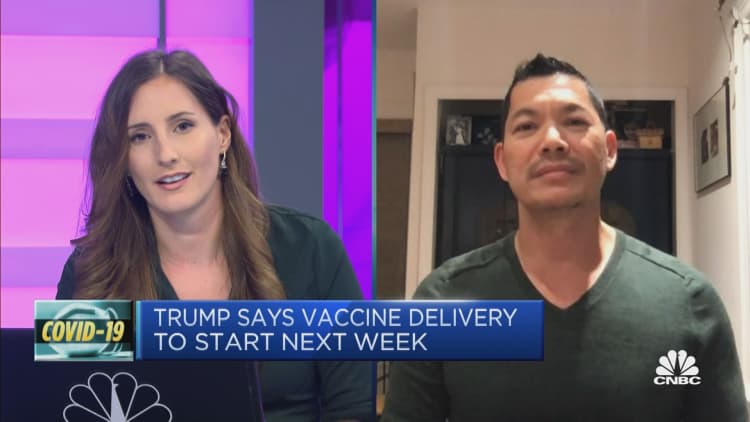California could see a tripling of hospitalizations by Christmas and is considering stay-home orders for areas with the highest case rates as it tries to head off concerns that severe coronavirus cases could overwhelm intensive care beds, officials said Monday.
"The red flags are flying in terms of the trajectory in our projections of growth," said Gov. Gavin Newsom. "If these trends continue, we're going to have to take much more dramatic, arguably drastic, action."
Hospitalizations have increased 89% over the past 14 days and nearly 7,800 coronavirus patients were hospitalized as of Monday. About 12% of Californians testing positive are likely to need hospital care within the next two to three weeks.
The biggest concern is intensive care cases, which have increased 67% in the past two weeks. If that continues, it would push ICU beds to 112% of capacity by mid-December.
That statistic is likely to drive state-mandated stay-at-home orders in 51 of California's 58 counties that already are seeing the most restrictions on business activities, said Dr. Mark Ghaly, the state's secretary of health and human services.
ICU hospitalization rates vary by county and region, he said, and is a greater concern than overall hospital capacity.
"Bottom line is we are looking at intensive care unit capacity as the primary trigger for deeper, more restrictive actions," Ghaly said.
"When that capacity goes away, or even when it gets stretched so far that staffing is stretched, that we have to set up space that isn't typically used for intensive care units, we know that the quality of care ... sometimes takes a dip and we see outcomes we don't want to see," he said.
By the second half of December California "could be pushing the limits in some areas," Ghaly said, adding that "we want to act sooner than that so we can get transmission down and we can handle those potential high ICU surges."


